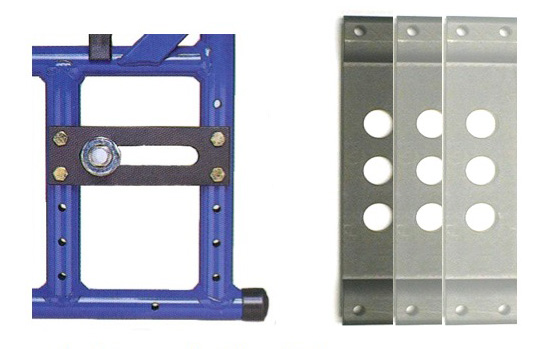Share:
Hello all!
Last month, I wrote an introductory article on the different types, or categories, of manual wheelchairs available. This month, let's focus on centre of gravity and its application to manual wheelchairs.
The position of the rear wheel on a manual wheelchair relative to the frame effects the position of the centre of gravity and will impact the performance of the wheelchair. The graphics below illustrate the position of the rear wheel along the horizontal plane, which changes the weight distribution between the rear wheel and the front casters.

When a person sits in a wheelchair, the person's mass is distributed between the front casters and the rear wheels. How the mass is distributed between the front casters and the rear wheels – that is, the relative distribution of weight between the front casters and the rear wheels – affects performance indicators, such as rolling resistance and manoeuvrability. When the rear wheels are in a rearward position relative to the frame of the wheelchair, as illustrated in the above graphic to the left, the mass of the person using the wheelchair is distributed to a greater extent over the front casters than compared to when the rear wheel is in a more forward position relative to the frame, as shown in the above graphic to the right. When an increased percentage of weight is distributed over the front casters, rolling resistance is increased and the wheelchair is more difficult to propel, whether through hand propulsion, foot propulsion, or a combination of the two. More strength and energy is required to propel the wheelchair.
In addition, weighting the front casters makes the wheelchair more difficult to manoeuvre, requiring more force to be exerted to turn the wheelchair. Another consideration is the turning radius. When the rear wheels are in a rearward position, the overall length of the wheelbase is greater and the turning radius is increased, compared to when the wheels are in a more forward position. One of the benefits of having the rear wheels in a more rearward position is that there is stability in the wheelchair; that is, the wheelchair is less likely to tip backwards. This stability, however, means that it is difficult to "de-weight" the front casters to perform a wheelie, which may be required for mobility, such as when crossing obstacles.1
When the rear wheels are in a more forward position, the opposite effects occur. The percentage of weight going through the front casters is decreased. As a greater proportion of weight goes through the rear wheels, rolling resistance is decreased, making it much easier to propel the wheelchair. When the rear wheel is in a more forward position, the overall length of the wheelbase and the turning radius are decreased. Since less effort and strength is required to propel and manoeuvre the wheelchair, energy expenditure is lessened when rolling resistance is decreased.
Just as stability is increased when the rear wheel is in a more rearward position, stability is decreased when the rear wheel is in a more forward position. This means that the wheelchair has the potential to tip backwards. Ideally, the rear wheel should be adjusted as far forward as possible without compromising the stability of the person using the wheelchair or interfering with the front casters. 1,2 This may need to be done incrementally to allow the person using the wheelchair to become accustomed to the increased rearward instability with forward movement of the rear wheel.2
So how is the rear wheel adjusted into a more forward position? For a folding wheelchair, the rear wheel may be adjusted through the axle sleeve or axle plate. If the model of folding wheelchair has an axle sleeve, as depicted in the photograph below to the left, moving the axle sleeve forward or backward in the axle plate allows for the centre of gravity adjustment. Other models of folding wheelchairs have axle plates with holes, as depicted in the photograph below to the right, and it is the axle plate that moves horizontally along the frame of the wheelchair to adjust centre of gravity and weight distribution between the wheels.

The centre of gravity adjustment is one of the reasons why a folding wheelchair is easier to propel than a standard wheelchair, which does not have the same ability to adjust for centre of gravity through the rear wheel. In a standard wheelchair, the rear wheel is in a rearward position relative to the frame. While this position provides for rearward stability, as we have seen, it increases rolling resistance and the strength and effort required to propel a wheelchair.
References
- Rehabilitation Engineering & Assistive Technology Society of North America. (2012). RESNA Position on the Application of Ultralight Manual Wheelchairs. Downloaded from http://resna.org/
- Consortium for Spinal Cord Medicine Clinical Practice Guidelines. (2005). Preservation of upper limb function following spinal cord injury: A clinical practice guideline for health-care professionals. Paralyzed Veterans of America.